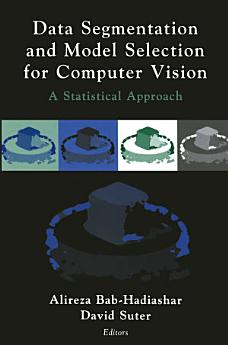Data Segmentation and Model Selection for Computer Vision: A Statistical Approach
Alireza Bab-Hadiashar · David Suter
Aug 2012 · Springer Science & Business Media
Ebook
208
Pages
reportRatings and reviews aren’t verified Learn More
About this ebook
The primary focus of this book is on techniques for segmentation of visual data. By "visual data," we mean data derived from a single image or from a sequence of images. By "segmentation" we mean breaking the visual data into meaningful parts or segments. However, in general, we do not mean "any old data": but data fundamental to the operation of robotic devices such as the range to and motion of objects in a scene. Having said that, much of what is covered in this book is far more general: The above merely describes our driving interests. The central emphasis of this book is that segmentation involves model fitting. We believe this to be true either implicitly (as a conscious or sub conscious guiding principle of those who develop various approaches) or explicitly. What makes model-fitting in computer vision especially hard? There are a number of factors involved in answering this question. The amount of data involved is very large. The number of segments and types (models) are not known in advance (and can sometimes rapidly change over time). The sensors we have involve the introduction of noise. Usually, we require fast ("real-time" or near real-time) computation of solutions independent of any human intervention/supervision. Chapter 1 summarizes many of the attempts of computer vision researchers to solve the problem of segmenta tion in these difficult circumstances.
Rate this ebook
Tell us what you think.
Reading information
Smartphones and tablets
Install the Google Play Books app for Android and iPad/iPhone. It syncs automatically with your account and allows you to read online or offline wherever you are.
Laptops and computers
You can listen to audiobooks purchased on Google Play using your computer's web browser.
eReaders and other devices
To read on e-ink devices like Kobo eReaders, you'll need to download a file and transfer it to your device. Follow the detailed Help Center instructions to transfer the files to supported eReaders.





